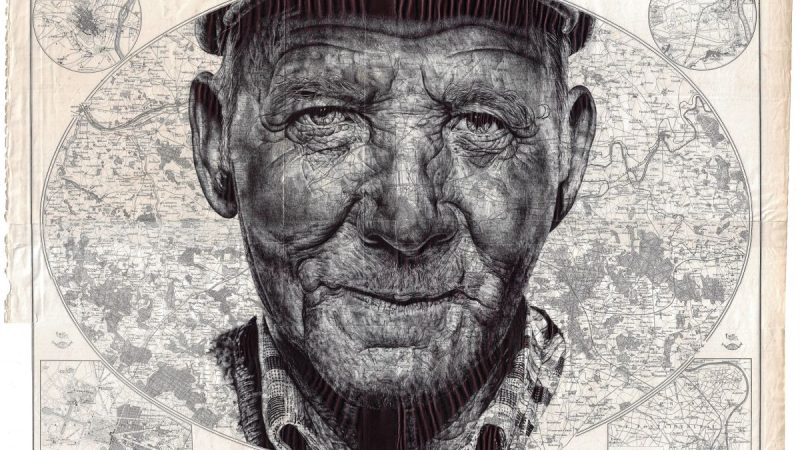Tailoring has long been a craft defined by precision, tradition, and artistry. Yet, every so often, a visionary emerges who changes the rules of the game. Mark Powell is one such figure—a designer who elevated tailoring beyond convention and reshaped it into an expression of personality, identity, and modern flair. His impact reaches far beyond Savile Row, bringing a refreshing spirit of individuality into the world of men’s fashion. Through his bold ideas and unmatched craftsmanship, he has not only designed suits but also crafted cultural moments. This article explores 10 incredible ways Mark Powell redefined tailoring and set new standards for elegance and creativity.
Blending Tradition with Modern Edge
Mark Powell stood out by respecting traditional tailoring techniques while injecting them with a contemporary twist. Rather than discarding heritage, he enhanced it by introducing slimmer fits, sharper cuts, and striking details. This balance gave classic suits a modern relevance without compromising their timeless appeal. His approach proved that tailoring could evolve while remaining rooted in tradition, setting him apart as both an innovator and a custodian of sartorial heritage.
Reviving the Spirit of the 1960s
The 1960s remain one of the most stylish decades in British culture, and Mark Powell skillfully drew from its energy. Inspired by icons like the Mods and rock stars of that era, his tailoring captured youthful rebellion and refined elegance in one silhouette. With narrow lapels, bold fabrics, and a confident stance, his designs paid homage to the past while resonating with modern tastes. By channeling the spirit of that decade, he created suits that told stories beyond the fabric.
Championing Individual Expression
One of the hallmarks of Mark Powell was his dedication to individuality. Instead of forcing clients into a singular mold, he crafted garments that reflected their personalities. Every client—from celebrities to everyday professionals—found their unique voice through his bespoke creations. He understood that a suit was more than attire; it was an identity marker. This philosophy redefined tailoring as a deeply personal journey rather than a rigid tradition.
Crafting for Celebrities and Icons
Mark Powell earned global recognition for dressing cultural icons, from musicians to Hollywood actors. His ability to design for high-profile figures without losing his authentic style reinforced his influence. Celebrities valued his skill in merging individuality with elegance, making his suits red-carpet staples. His work elevated tailoring into popular culture, demonstrating that bespoke craftsmanship could resonate with mass audiences while retaining exclusivity.
Innovative Use of Fabrics
A key part of Mark Powell’s success was his fearless experimentation with fabrics. He moved beyond conventional wools to explore bold patterns, luxurious textures, and striking color palettes. This innovation brought vibrancy to men’s tailoring, challenging the notion that suits had to be subdued or predictable. His fearless use of fabrics expanded what tailoring could look like, inspiring other designers to follow suit and broadening choices for clients worldwide.
Reinventing the Bespoke Experience
Rather than presenting tailoring as intimidating or rigid, Mark Powell reinvented the bespoke experience to feel accessible and enjoyable. He created environments where clients could collaborate and actively shape the design process. This shift in approach broke down barriers, making bespoke tailoring less elitist and more engaging. His studios became creative spaces where individuality flourished, redefining the relationship between tailor and client.
Crossing Over into Pop Culture
Unlike many traditional tailors, Mark Powell embraced the cultural landscape, allowing his designs to become part of music, film, and media. His suits appeared on influential stages, both literally and figuratively, amplifying his visibility and reinforcing his role as a cultural designer. By stepping into these creative spaces, he helped redefine tailoring as not just formal wear but as a bold symbol of cultural identity.
Inspiring Global Recognition
Though rooted in London, Mark Powell’s influence extended globally. Fashion enthusiasts across Europe, the United States, and Asia admired his groundbreaking approach. His style resonated with international markets that appreciated British tailoring but craved something fresh. Through his unique balance of tradition and modernity, he introduced a global audience to the artistry of bespoke design, leaving a mark far beyond his home country.
Tailoring for Every Generation
Mark Powell didn’t confine his designs to one age group. His creations appealed to younger clients seeking individuality as well as older generations valuing timeless craftsmanship. By catering to a wide demographic, he ensured that tailoring remained relevant across eras. His ability to connect with diverse audiences was part of his genius, showing that well-crafted style knows no boundaries of age or time.
Leaving a Lasting Legacy in Fashion
The final and perhaps most incredible way Mark Powell redefined tailoring was through his lasting legacy. His designs continue to inspire both emerging designers and established names in the industry. Beyond garments, his philosophy—celebrating individuality, respecting tradition, and embracing modernity—remains deeply influential. His legacy ensures that tailoring will continue to evolve, carrying his vision of style forward for generations to come.
Conclusion
The world of tailoring has witnessed many masters, but Mark Powell occupies a unique place as both innovator and visionary. By blending heritage with modernity, reviving cultural moments, and championing personal expression, he redefined what it means to wear a suit. His work transcended fabric and stitching, shaping culture itself. Today, his influence continues to resonate, reminding us that tailoring is not just about clothes—it is about identity, confidence, and artistry. Mark Powell left behind more than suits; he left a timeless philosophy of style.
FAQs
Q1: What made this tailoring approach different from traditional methods?
It balanced classic craftsmanship with modern style, ensuring suits felt both timeless and contemporary.
Q2: Why was the 1960s-inspired revival significant in men’s fashion?
It drew from the era’s energy and reintroduced bold, youthful tailoring with a modern appeal.
Q3: Did the designer work with celebrities?
Yes, many cultural icons wore these creations, helping the work gain international recognition.
Q4: What was unique about this bespoke experience?
It was made collaborative and accessible, encouraging clients to express individuality through their suits.
Q5: How does this legacy live on today?
The influence continues through designers inspired by the vision and clients who embrace the philosophy of individuality and elegance.
Also read:









